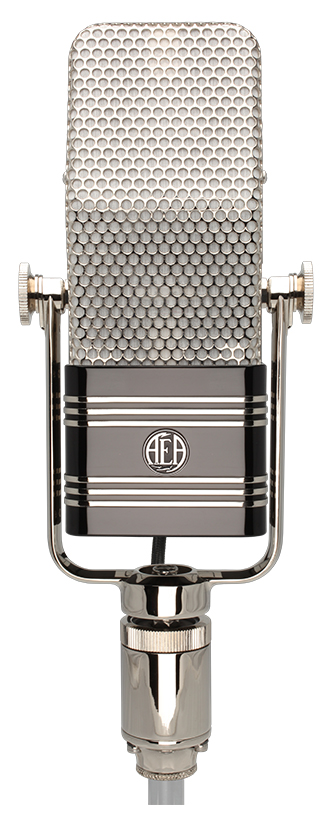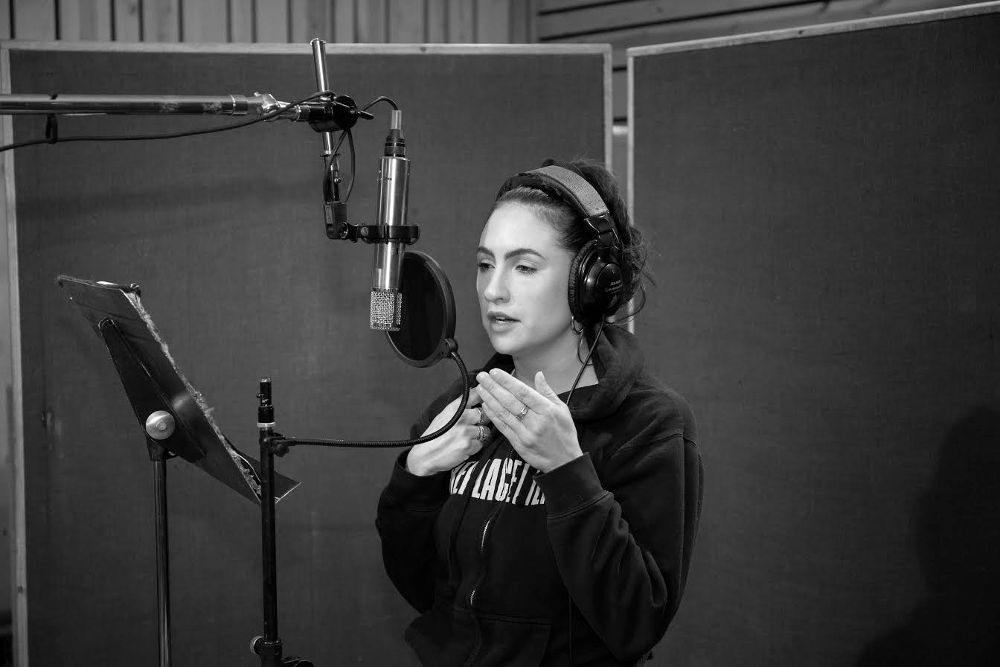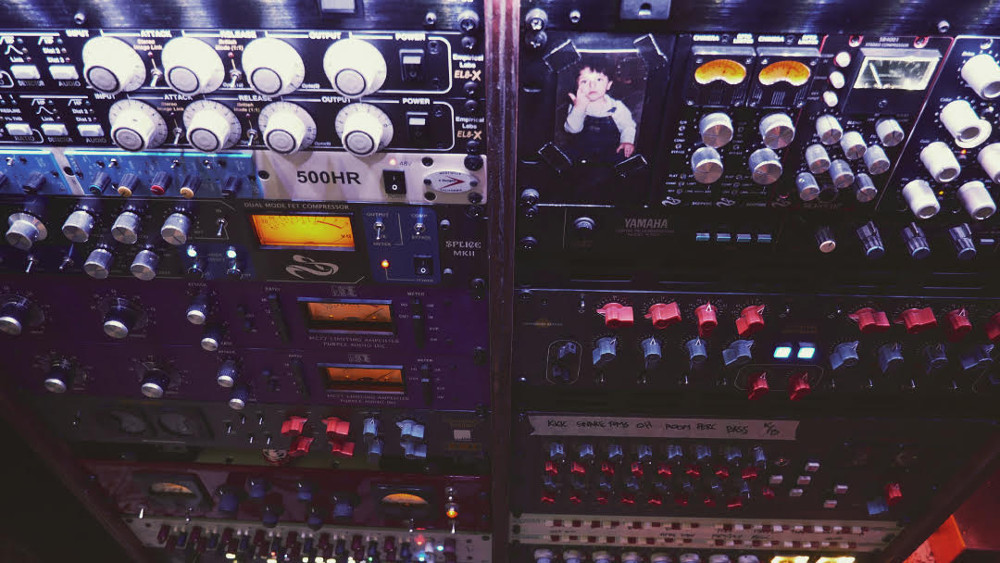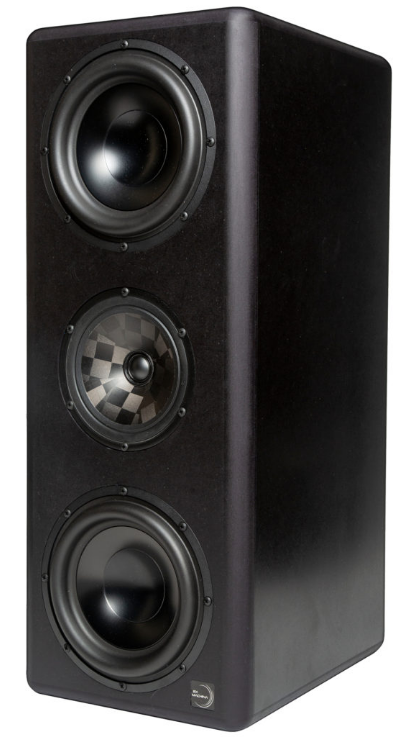Vocal Recording and Mix Analysis: Details and Intuition Craft an Intense R&B Track
Sultry. Ask anyone about Ruby Stinson’s new single, “Come Clean,” and sultry surfaces.
It’s an addictive R&B song simmering with heat-of-the-moment intimacy. But capturing Stinson’s star-quality voice was not a spontaneous act. For NYC-based producer, mixer and co-writer Richie Beretta, recording vocals for “Come Clean” required a careful balance of audio engineering acumen and studio psychology.
When the mix phase began intuition kicked in. Beretta, whose heavy credits include Beyoncé, Parliament-Funkadelic, and Major Lazer, called on instinct to nail the track’s up-to-the-minute mix.
Stinson’s ultra-present verse vocals sing straight into your ear. The chorus takes her rich voice to another atmosphere with subtle delays. Then the bridge brings Ruby next dimension with luscious reverb and precision space creation. Throughout, the soulfully-crafted arrangement of guitar, keys, bass, and beat feel perfectly placed.
Ruby’s DNA is musically infused with her father, revered Replacements bassist Tommy Stinson. Ruby Stinson may be rock royalty, but Beretta stayed sensitive to her unique needs as an indie artist. It was key in their quest for a timeless track.

Don’t miss this in-depth Track Analysis. You’ll learn:
- The methodical mindset that the engineer and artist need for choosing vocal microphones and winning takes
- The impact of “Kondo ing” both his analog gear and ITB life
- His secret weapon monitors (no longer a secret!)
- A sweet 808 beat mix tip
And much more—imparted via no-holds-barred-Beretta ‘tude. Now, let’s tune to the Q & A:
Mics and the Artist Mind
Richie, how did you and Ruby connect, and how did that lead to you producing her latest EP?
Ruby and I met at a party, and I’ve been working with her since 2013. Most of that time has been dedicated to developing Ruby’s sound and writing songs.
How did you approach recording the vocals for “Come Clean”? What was your initial thought process, and the lessons learned from the first session? What adjustments did you make to get the recording you wanted?
Ruby is a performer. Her background is in dance and stage performance. Getting her best performance on the record meant that for her to have the most fun on the mic, she’s probably going to move around a lot.
While that may seem great and organic, it could mean my mic choices are going to be limited to those that don’t change timbre when the source moves off the center axis. We first started out with a Telefunken C12, and in hindsight probably not the best choice since the capsule is pretty small and any movement was heard—her voice would dramatically shift in tone [as she moved].
The next choice was a larger diaphragm modded Neumann U 47 that we have at Spin Music Studios, the studio I track out of in Long Island City. Same problem there, we were getting tone shifts and oddly enough Ruby’s vocals were much more sibilant at times.
Despite the issues we had, we thought the performance was worth keeping so I went in and tried to cure the problems in post. After my editing we both looked at each other and knew that the post-edits removed a human element that we wanted, so back to the drawing board.
The third time around I put her on an AEA R44C ribbon and everything clicked. She could move and it didn’t change tone, the darker mic alleviated any sibilance. I also tracked with no compression this time around, so I can clip gain words that needed attenuation or boosting on the fly when we were making the comp.
Throughout all of this, how was Ruby’s attitude and work ethic important to capturing the best possible vocal track?

The AEA R44C, which replicates the vintage RCA 44BX ribbon microphone, was correct for “Come Clean.”
Roobs is a worker. Most artists get discouraged when they have to re-track, and rightfully so. There are budget constraints, time constraints, exhaustion. All of it comes into play.
Engineers and producers can’t just think about the technical stuff all the time – if all I cared about was the mic choice this record would have never happened. We have to be cognizant of the artist’s mentality getting affected by real-life intrusions. If they can’t afford another take because they’re paying for the production costs out-of-pocket, that may trigger anxiety that can kill an otherwise great performance.
In Ruby’s case she knew what she wanted and committed, and I respect the hell out of her for that. She’s setting a great example for independent artists. You’ve got to commit to your investment in your art.
Artists at an independent level can get lost really easily in the Instagram world or on the Internet with all these producers or mixers giving their grind culture advice or sharing this esoteric record-making approach. Then, when the artist actually gets in the game they realize they have to work eight jobs to afford a studio to work in, and sort through 839 engineers just to find someone capable.
Or maybe they hit a wall and realize they have to step their game up. Suddenly, all of that romanticized Internet advice or those yoga poses and holistic compression practices some pop engineer said on IG Live goes out the window.
Indie artists have it hard and engineers need to be not just capable of facilitating their vision, but empathetic of their struggle. At the same time they also must demand, albeit gently and respectfully, that the artist demand just as much from themselves as they do from the music. It’s a balancing act for sure.
The Mix
From there, how did you approach the mix? You have a philosophy of not wanting to take “music farther away from the source.” How did that lead to the creative and technical decisions you made?
My mix mentality is always evolving. I’m always hungry to improve myself.
We did a few different mixes of “Come Clean,” showcasing different aspects of the production, trying different vocal production techniques and so on. The first passes were somewhat experimental to see what stuck, and I found that the less I did the better things sounded from a fidelity standpoint.
This session was a turning point for me, as I tried my best to not remove the music away from its original source. In other words, I try not to stack plugins or make my analog chains convoluted. The idea is to name that tune in fewer notes.
The verses were a blend of dancehall with a vintage Motownesque bass that I laid down. The mix had to be mindful that both these genres rely heavily on low end. I’d love to tell you some cool technique I used to figure out my balance between kick and bass, but honestly I’ve shut that part of my brain off a while ago.
The weight goes to what makes me want to dance the most. If it’s a kick, the kick gets it. If it’s the bass, the bass gets it. If the bass is utilizing the kick drum to act as an enforcer, in that case I’ll split the weight between both and probably favor my kick.
The chorus was a little less tricky since the bulk of that weight was carried by pretty big 808. It was more of a typical balance you’d hear on any record with a transient forward kick and thicc—with two c’s!—808.
One thing I like to do with 808’s is have a mono and stereo one. The mono one is the sub-harmonic, and the stereo one is a distorted upper harmonic that’s mildly spread using chorus.
What are some recent studio additions (or solid standbys) in your mix suite that helped you to fully realize your vision?
Since mixing “Come Clean,” my studio got an overhaul acoustically and with some new gear additions.
On “Come Clean” I was using two Chandler RS124 compressors on the vocals, one for the chorus and one for the verse. I was also using an 1176 for my vocal parallel. But, I’ve been trying to Marie Kondo my place for a while, and I just thought separate compressors for different parts is too over-the-top for me.
So I went and got a Retro 176 limiting amplifier for all of my vocals. From there it goes into my Retro 2a3 dual program EQ. I repurposed my RS124 compressors, one is used on bass now and the other is used for vocal parallel. I sold all my 1176’s except for a Purple MC77.
I approach my analog rig like how I approached guitar pedals: After repurposing stuff I spent a lot of time experimenting with tones, and now it’s just set-it-and-forget-it.
My ITB has gotten simpler as well. Most of my EQing is done with FabFilter Pro-Q 3. I don’t really waste my time with any kind of analog modeler because…well, I have analog stuff and it all goes back to trying not to have a convoluted signal chain. I’m not saying the analog modelers are bad. There are some great and realistic plugins out there, it’s just not for me.
I like the sound of analog, it’s something I have fun working on and those things are important to me. If you’re selling your rig for $1,000,000 dollars don’t let me stop you, get that paper—but I doubt I’ll make the jump.
The biggest addition to my rig has been my Ex Machina Quasar monitors. I was using ATC’s for almost 10 years and made the switch around June of 2020.
These monitors are the best I’ve ever heard. In fact, I recently had to recall the “Come Clean” session for an online seminar. I don’t own some of the outboard I used on the original mix, so I had to remix some parts of the song including the vocals and drums. Within an hour I got a better mix out of the Ex Machinas, and I’m kinda upset about it HAHA.
Song Creation, Not Content Creators
You told me about a song: “It’s got to sound beautiful, like it was meant to be created, not like ‘content.’ A well-done work stands the test of time.” Why is that your philosophy, and how is it embodied in “Come Clean?”
I think it’s horrible that these days artists, especially those on an indie level, are being conditioned to treat their art as content meant to be consumed immediately and forgotten—you know, “rinse and repeat”-type bullshit.
This Internet culture garbage is creating an environment where it’s literally unsustainable to make your art. Art should be meant to last. A well-done work, despite what context it’s trying to be applied to, should stand the test of time.
As the producer of “Come Clean,” or any record I have a hand in, I’m borrowing from sound that inspired me, usually as a kid. In this case, dancehall and R&B.
If those genres never made it past the year when they surfaced, none of this would have happened. I feel as a writer and creator that I owe it to the things that inspired me—as well as the artists I work for—to create records that deserve to be preserved.
— David Weiss is an Editor for SonicScoop.com, and has been covering pro audio developments for over 20 years. He is also the co-author of the music industry’s leading textbook on synch licensing, “Music Supervision, 2nd Edition: The Complete Guide to Selecting Music for Movies, TV, Games & New Media.” Email: david@sonicscoop.com
Please note: When you buy products through links on this page, we may earn an affiliate commission.












[…] It’s an addictive R&B song simmering with heat-of-the-moment intimacy. But capturing Stinson’s star-quality voice was not a spontaneous act. For NYC-based producer, mixer and co-writer Richie Beretta, recording vocals for “Come Clean” required a careful balance of Read more… […]